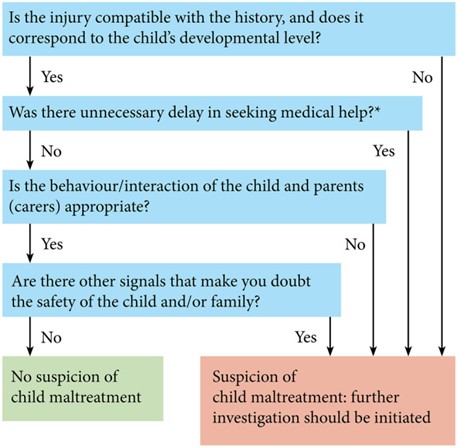Cookie notice
Augeo handles its information very carefully and will never make this information available to third parties.
Emergency departments (EDs) serve as critical entry points to acute healthcare and play a vital role in the early recognition of child maltreatment, with estimates indicating that 0.2% to 10% of ED visits in Europe are related to abuse.
Systematic screening of children for signs of child abuse and neglect has been shown to improve detection rates in EDs. This includes the use of a screening or signalling tool, combined with targeted training of ED staff.
The Screening instrument for Child Abuse and Neglect (SCAN) has recently been developed and validated at the ED, in the Dutch context (Hoedeman et al. 2023). The SCAN consists of four questions (figure 1) and was validated based on three observational studies across eight different EDs including nearly 25,000 children. In cross-validation, the SCAN showed a moderate performance with a pooled Area Under the Curve of 0.75 (95% CI 0.63–0.87).
A positive screening result of the SCAN warrants a thorough work-up for potential child maltreatment, including a complete history, top-to-toe examination, additional diagnostic tests when indicated, and consultation with a child abuse expert.
The SCAN is based on questions from previous (internationally) used screening instruments, such as the SPUTOVAMO (Sittig et al., 2014; Sittig et al., 2011) and the Escape instrument (Louwers et al., 2012; Louwers et al., 2013). These instruments have shown to increase detection rates of child maltreatment at EDs, when combined with training and (legal) guidelines.
Despite these developments, a recent European survey among healthcare professionals revealed a widespread lack of screening tools, training, and institutional policies addressing child maltreatment—highlighting the ongoing need for improvement in the recognition and response to child abuse across EDs in Europe (Hoedeman et al., 2021).
Figure 1: Screening instrument for Child Abuse and Neglect (SCAN)

* only regarding the patient delay, no doctors delay